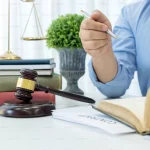What Evidence Is Required for A Pedestrian Accident Lawsuit?
Being struck by a car while crossing the street is one of the most dangerous things that may happen to a person. As a pedestrian, you may have many questions about what evidence is required to support compensation claims. However, by taking a few basic measures as promptly after the accident, you can make the claim process go more smoothly and boost your chances of receiving reasonable payment for your injuries. In this article, we’ll take you through the necessary evidence when investigating a pedestrian accident.
What Evidence Should I Correct?
Pedestrians are particularly at risk from reckless drivers since they have no defense against the enormous size and weight of the approaching car. You ought to demonstrate who was responsible for the accident, the type and extent of your injuries, and the impacts they’ve had on your life. Immediately after the incident, you can begin collecting evidence if you have the physical strength to do so. Collect the identities and contact details of every witness. Photograph the scene and look around to see if any CCTVs took a video of the automobile striking you.
After gathering all information from the scene, you should investigate the driver's history. You can do that by checking their criminal record and driving record. You will also want to check their insurance coverage, employment history, and any other relevant factors that may affect their ability to drive safely (i.e., a medical condition).
It’s also important to know whether the driver was driving too fast. If a driver causes an accident while driving over the speed limit, they may be liable for any damages caused by their negligent actions. Furthermore, what the driver was doing at the time of the accident may impact the case’s direction. A driver may be held responsible for an accident for distracted driving.
Witnesses and police reports are both very important to the scope of your case, as they can help determine negligence and prove that it was indeed a pedestrian accident. If you have witnesses who saw what happened, this will often be enough for a judge or jury to decide whether or not there was negligence on the part of the other party involved in the crash.
The medical records that support your claim are important. Inform the healthcare providers who are taking care of you about all your injuries, pains, and distress. The more evidence you can provide, the better your case will be. Save any receipts, correspondence, records, statements, and other paperwork pertaining to your Medicare. A doctor's testimony is also critical to ensuring the success of such cases.
A personal injury attorney can assist you in gathering evidence by researching public records to find out how frequently accidents and other events of that sort occur at the specific intersection where the incident happened.
Even though it may sound odd, there are instances where a pedestrian may be held liable for an accident. An individual will not receive any reimbursement if they were the ones responsible for the collision and the driver wasn't at fault. Some of the situations involving pedestrians who are somewhat at fault for the collision include walking in the middle of the street instead of using the crosswalk, ignoring stop signs, operating a phone while crossing the road, and walking in bound places such as expressways.
Wrapping Up
If you’re a victim of an accident, gathering the right evidence can be essential for your personal injury case. There could be proof in photographs and videos, witnesses may recall important details and there may be physical evidence on the scene.
More to Read:
Previous Posts:







